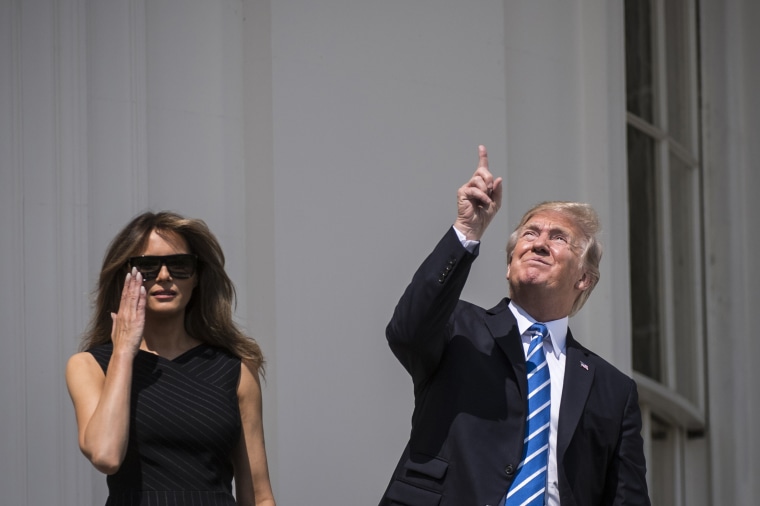The last time North America experienced a solar eclipse, we were seven years younger, a pandemic was the last thing on anybody’s mind, and Donald Trump was president of the United States.
It was Aug. 21, 2017, and a solar eclipse was due to pass over the U.S., darkening the skies for a few cosmically wondrous minutes. In Washington, D.C., then-President Trump stood on a balcony of the White House with Melania Trump and his son Barron as the moon slowly moved across the sun.
To the nation’s horror (or dismay or embarrassment, or some combination of the three), the president then looked directly at the sun several times, squinting and pointing. An aide shouted, “Don’t look!”
By one count, Trump had looked up at the sun at least six times, violating really the only rule of watching a solar eclipse: Do not stare at the sun without protective eyewear.

He later put on protective glasses and continued to watch the eclipse. The incident was one of the many absurd (albeit far less consequential, politically speaking) moments of Trump’s presidency.
Which brings us to Monday’s eclipse. Learn from Trump’s mistake and absolutely do not stare directly at the sun without protective eyewear. Or let NASA show you how to make a pinhole camera to view the eclipse, which also does not entail staring into the blazing-hot corona of a star.
